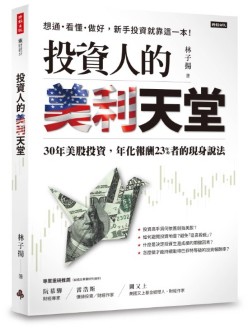Quantitative investing is indeed interesting
My sharing
After recently re-reading some quantitative investment books, I found that these quantitative investment teams have many common characteristics. In particular, the following two books are highly recommended by me. I suggest that readers who are interested in quantitative investment must find time to read them in detail several times:
- “The Man Who Solved the Market“: please see my post of “The quant’s must-read book for Jim Simons “The Man Who Solved the Market”“
- “A Man for All Markets“
Several representives
- Simmons’ renaissance
- D.E. Shaw &Co
- Long term capital management
- APT
- Bamberger
- Kepler
Characteristics of team members
Members’ professional diversity
Take the Renaissance Company founded by Simons as an example. Most of the company’s members are Simons’ colleagues or friends in the mathematics world, including experts in Markov chains, Bayesian mathematics, data analysis experts, cryptography experts, statistics experts, and computer science experts. Programming experts, speech recognition experts, data cleaning and integration experts, machine learning experts, economists, chemists, biologists, physicist consultants, etc.
Each one requires a highly professional theoretical background and is a truly rare professional with specialized skills.
All are smart people
There are no exceptions for the members of the quantitative investment team. From the perspective of ordinary people, they are all extremely smart weirdos who are dedicated and motivated to work. They regard solving impossible problems as their goal.
Financial background does not matter
It doesn’t matter whether you have a financial background or not, but whether you have a smart mind determines whether you are suitable for quantitative investment. Because I don’t have financial knowledge, as long as I study hard and find someone to help me, I will definitely be able to change my life. However, whether one is smart or not is not impossible to make up for through acquired learning.
Extremely dependent on mathematics
All are mathematicians
The founders of famous quantitative investment teams, almost without exception, are all mathematicians. This is of course no coincidence.
Examples of false types include Nash, who invented game theory, Shannon, the master of information theory, Thorpe, the first quantitative trading mathematician, Kelly, who invented the Kelly formula, and Simons, the most successful quantitative investor.
Model is the foundation
All quantitative investment teams have only one goal–to build a model that can sustainably make profits and be automatically operated by computers. What it relies on are mathematical models, algorithms, and market tests.
Three major theorems
I found that most quantitative investment teams rely heavily on mathematical models. Among them, the three sets of Bayes theorem, statistical arbitrage, and regression testing are the most important. They almost constitute the core and necessary basic theorems of the quantitative investment team.
Data is important
All models, statistics, three theorems, trading trends, and historical lessons require reliable data as a basis, otherwise everything will be in vain.
Trading Characteristics
High frequency and large trading
Almost all quantitative investment teams use high-frequency and large-amount transactions; that is, trading a very large amount of financial products in a short period of time.
Trend trading
Most quantitative investment teams use trend trading. They all believe that the trend is the trader’s friend. As long as the trading method they bet on can make a lot of money, they will increase the amount of bets on hand until the bet amount is large. Until the trend you bet on expires or you can no longer make money.
Financial products involved
The financial products involved include stocks, foreign exchange, commodities, precious metals, crude oil, futures, indices, stock options, bonds, etc.
However, most quantitative trading is actually engaged in foreign exchange, commodities, precious metals, crude oil, futures, indices, and stock options that ordinary retail investors will not touch; that is, derivative financial products.

Related articles
- “Commonalities in Quantitative Investment“
- “The quant’s must-read book for Jim Simons “The Man Who Solved the Market”“
- “Jim Simons, the lord of quantitative investing“
- “Imitating great investors is the fastest and most effective way“
- “How to research successful investment masters?“
- “The correlation between fund size and return on investment“
- “The career annualized return on investment of top investment masters“
- “John Maynard Keynes, Investment master“
- “Investors should care annualized rate of return (IRR), How to calculate?“
Disclaimer
- The content of this site is the author’s personal opinions and is for reference only. I am not responsible for the correctness, opinions, and immediacy of the content and information of the article. Readers must make their own judgments.
- I shall not be liable for any damages or other legal liabilities for the direct or indirect losses caused by the readers’ direct or indirect reliance on and reference to the information on this site, or all the responsibilities arising therefrom, as a result of any investment behavior.
